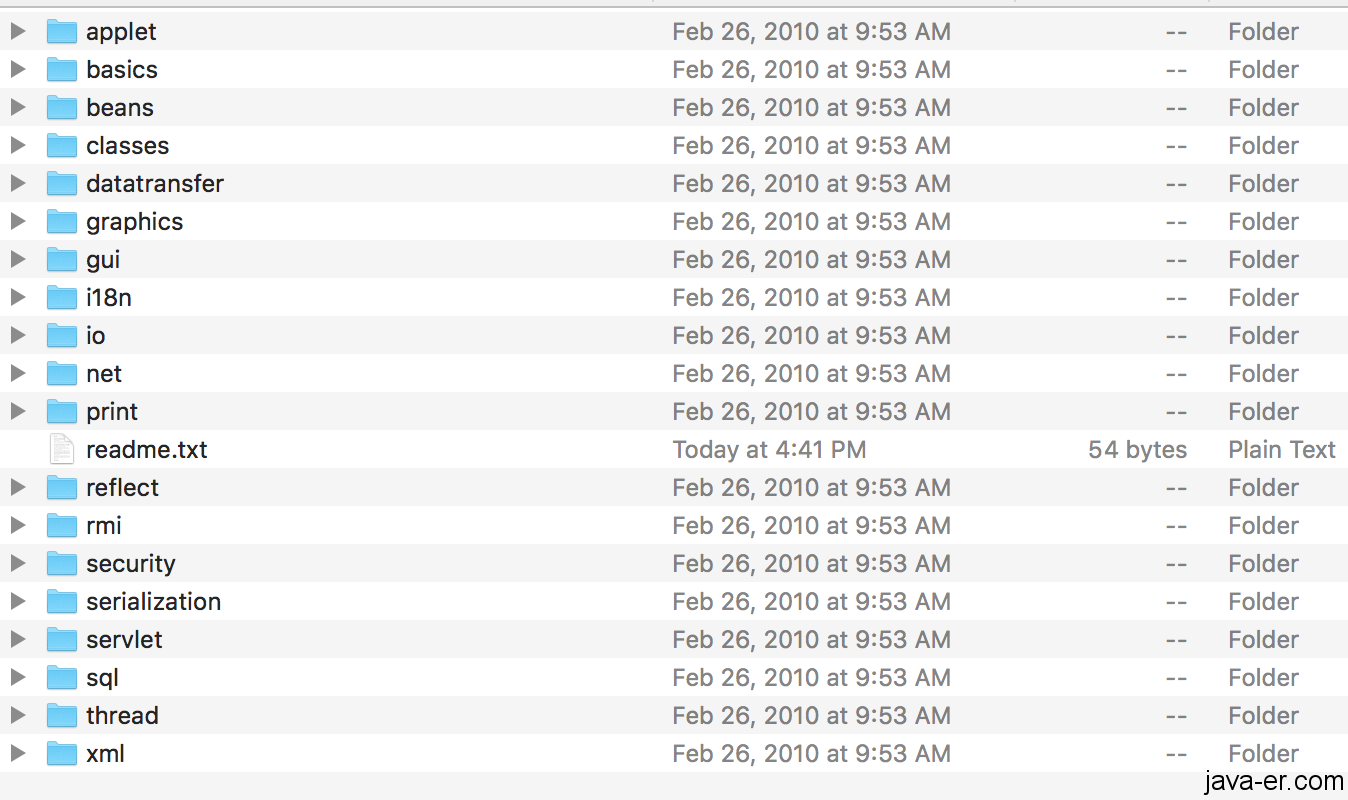164个完美Java程序源码下载
/*
* Copyright (c) 2000 David Flanagan. All rights reserved.
* This code is from the book Java Examples in a Nutshell, 2nd Edition.
* It is provided AS-IS, WITHOUT ANY WARRANTY either expressed or implied.
* You may study, use, and modify it for any non-commercial purpose.
* You may distribute it non-commercially as long as you retain this notice.
* For a commercial use license, or to purchase the book (recommended),
* visit http://www.davidflanagan.com/javaexamples2.
*/
package com.davidflanagan.examples.sql;
import java.sql.*;
import java.util.Properties;
/**
* This class uses the DatabaseMetaData class to obtain information about
* the database, the JDBC driver, and the tables in the database, or about
* the columns of a named table.
**/
public class GetDBInfo {
public static void main(String[] args) {
Connection c = null; // The JDBC connection to the database server
try {
// Look for the properties file DB.props in the same directory as
// this program. It will contain default values for the various
// parameters needed to connect to a database
Properties p = new Properties();
try { p.load(GetDBInfo.class.getResourceAsStream("DB.props")); }
catch (Exception e) {}
// Get default values from the properties file
String driver = p.getProperty("driver"); // Driver class name
String server = p.getProperty("server", ""); // JDBC URL for server
String user = p.getProperty("user", ""); // db user name
String password = p.getProperty("password", ""); // db password
// These variables don't have defaults
String database = null; // The db name (appended to server URL)
String table = null; // The optional name of a table in the db
// Parse the command-line args to override the default values above
for(int i = 0; i < args.length; i++) {
if (args[i].equals("-d")) driver = args[++i]; //-d
else if (args[i].equals("-s")) server = args[++i];//-s
else if (args[i].equals("-u")) user = args[++i]; //-u
else if (args[i].equals("-p")) password = args[++i];
else if (database == null) database = args[i]; //
else if (table == null) table = args[i]; //
else throw new IllegalArgumentException("Unknown argument: "
+args[i]);
}
// Make sure that at least a server or a database were specified.
// If not, we have no idea what to connect to, and cannot continue.
if ((server.length() == 0) && (database.length() == 0))
throw new IllegalArgumentException("No database specified.");
// Load the db driver, if any was specified.
if (driver != null) Class.forName(driver);
// Now attempt to open a connection to the specified database on
// the specified server, using the specified name and password
c = DriverManager.getConnection(server+database, user, password);
// Get the DatabaseMetaData object for the connection. This is the
// object that will return us all the data we're interested in here
DatabaseMetaData md = c.getMetaData();
// Display information about the server, the driver, etc.
System.out.println("DBMS: " + md.getDatabaseProductName() +
" " + md.getDatabaseProductVersion());
System.out.println("JDBC Driver: " + md.getDriverName() +
" " + md.getDriverVersion());
System.out.println("Database: " + md.getURL());
System.out.println("User: " + md.getUserName());
// Now, if the user did not specify a table, then display a list of
// all tables defined in the named database. Note that tables are
// returned in a ResultSet, just like query results are.
if (table == null) {
System.out.println("Tables:");
ResultSet r = md.getTables("", "", "%", null);
while(r.next()) System.out.println("\t" + r.getString(3));
}
// Otherwise, list all columns of the specified table.
// Again, information about the columns is returned in a ResultSet
else {
System.out.println("Columns of " + table + ": ");
ResultSet r = md.getColumns("", "", table, "%");
while(r.next())
System.out.println("\t" + r.getString(4) + " : " +
r.getString(6));
}
}
// Print an error message if anything goes wrong.
catch (Exception e) {
System.err.println(e);
if (e instanceof SQLException)
System.err.println(((SQLException)e).getSQLState());
System.err.println("Usage: java GetDBInfo [-d ]\n" +
"\t[-u ] [-p ] ");
}
// Always remember to close the Connection object when we're done!
finally {
try { c.close(); } catch (Exception e) {}
}
}
}
百度云下载
https://pan.baidu.com/s/1j1Tc07evQnloLF4lv6YikA
月小升QQ 2651044202, 技术交流QQ群 178491360
首发地址:月小升博客 – https://java-er.com/blog/164-java-down-source/
无特殊说明,文章均为月小升原创,欢迎转载,转载请注明本文地址,谢谢
您的评论是我写作的动力.
近期文章
标签
